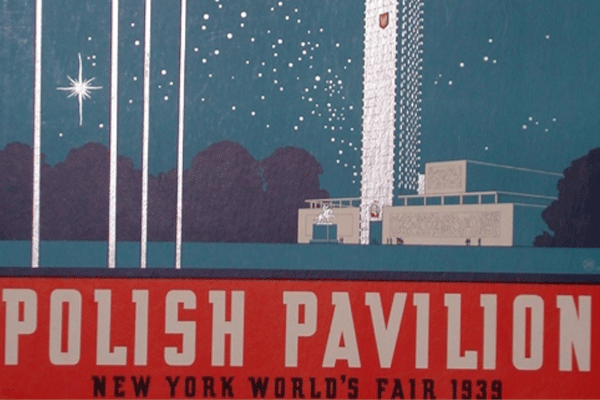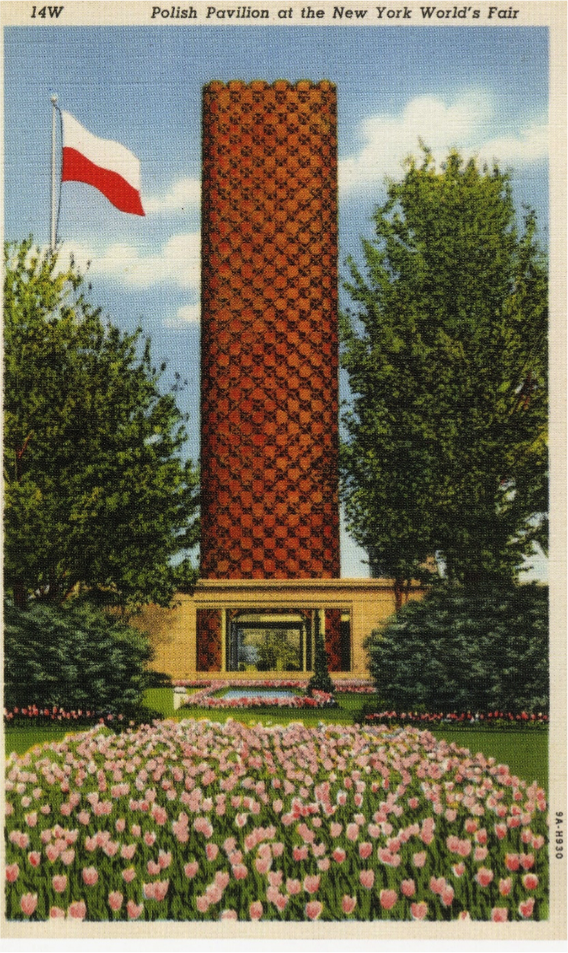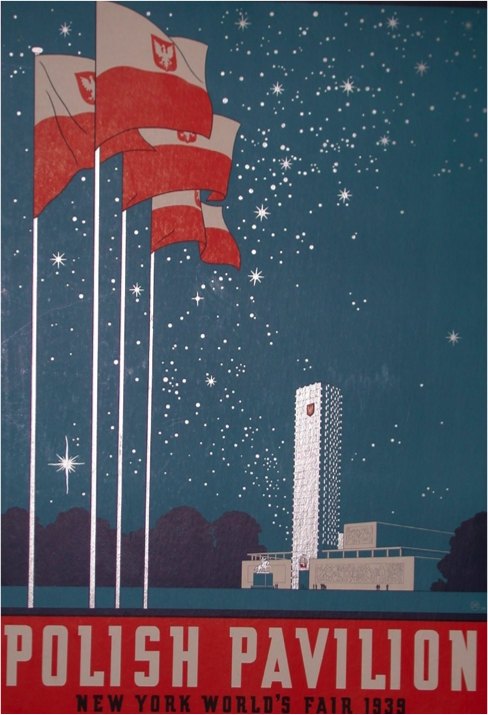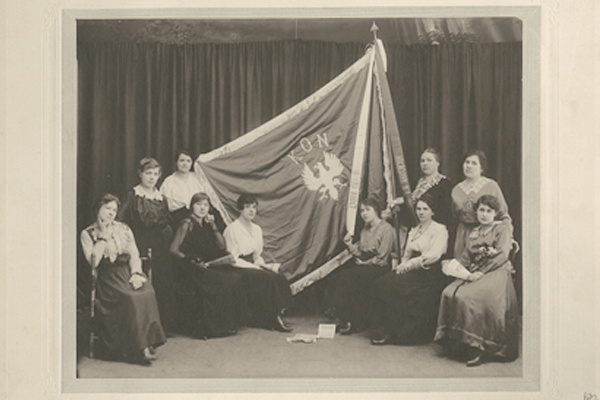Since 1851, when the Great Exposition of Commerce of All the Nations was held in London, international exhibitions have been organized every several years as a review of the latest attainments of civilization. One such event was organized in New York in 1939 and 1940, in which Poland participated. The Polish Pavilion was designed by Jan Cybulski, Jan Galinowski, Felicjan Szczęsny Kowarski. It consisted of twelve rooms, each with its own theme: The Past and Future of Poland; Art; Applied Art; Science; Communications; Poland at Sea; Social Welfare; Manufactured Products; Agriculture; Textiles; Folk Art; and Forestry.
The outbreak of World War II on September 1, 1939 prevented the return of exhibits to Poland. Through the efforts of the PRCUA President, Joseph L. Kania, and its Museum Director, Miecislaus Haiman, an agreement was reached between the PRCUA Board of Directors and Stefan Ropp, General Commissioner of the Polish Department, for the Museum to purchase artifacts for $24,000, to receive some as gifts, and to hold others on deposit for the Polish Government in London and for private individuals. The acquisitions were readied for viewing by the public on Polish Constitution Day, May 3, 1941, in Chicago.
The assembly of items delivered from the Polish Pavilion to the Museum constitutes a most varied collection. Its elements can fill several rooms: objects of modern art; the works of all sections of applied art; musical instruments; folk art; photographs; models of Polish monuments; reproduction of relics (doors of Gniezno Cathedral, globe from Jagellonian University in Krakow); as well as miniature sailing ships, steamships and planes flying Poland’s colors, and locomotives and coal barges manufactured in Polish factories. In conjunction with the 70th anniversary of the Polish Pavilion, two members of the PMA staff took part in a conference held in Warsaw in November of 2009.




